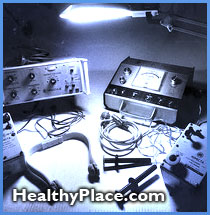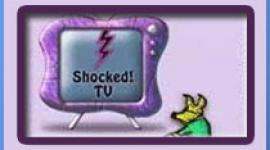Pediatric ECT Electroconvulsive Therapy in Adolescents and Children
Recent use of electroconvulsive therapy (ECT) in adolescents and children reflects a greater tolerance for biological approaches to the problems of the young.
 At a 1994 conference of the Child & Adolescent Depression Research Consortium, reporters from five academic centers added an experience with 62 adolescent patients to 94 cases already described (Schneekloth and others 1993; Moise and Petrides 1996). Adolescents with major depressive syndromes, manic delirium, catatonia and acute delusional psychoses were successfully treated, usually after other treatments had failed. ECT's efficacy and safety were impressive, and the participants concluded that it was reasonable to consider this therapy in adolescents in instances where condition of the adolescent meets criteria for ECT in the adult.
At a 1994 conference of the Child & Adolescent Depression Research Consortium, reporters from five academic centers added an experience with 62 adolescent patients to 94 cases already described (Schneekloth and others 1993; Moise and Petrides 1996). Adolescents with major depressive syndromes, manic delirium, catatonia and acute delusional psychoses were successfully treated, usually after other treatments had failed. ECT's efficacy and safety were impressive, and the participants concluded that it was reasonable to consider this therapy in adolescents in instances where condition of the adolescent meets criteria for ECT in the adult.
Less is known about the use of ECT in prepubescent children. The few reports that do exist, however, have been generally favorable (Black and colleagues; Carr and coworkers; Cizadlo and Wheaton; Clardy and Rumpf; Gurevitz and Helme; Guttmacher and Cretella; Powell and colleagues).
The most recent case report describes RM, 8-1/2, who presented with a one-month history of persistent low mood, tearfulness, self-deprecatory comments, social withdrawal and indecisiveness (Cizadlo and Wheaton). She spoke in a whisper and answered only with prompting. RM was psychomotor retarded and required assistance in eating and toiletting. She continued to deteriorate, with self-injurious behavior, refusing to eat and requiring nasogastric feeding. She was frequently mute, exhibited board-like rigidity, was bedridden, enuretic, with gegenhalten-type negativism. Treatment with Paroxetine (Paxil), Nortriptyline (Pamelor)-and, for a short while, Haloperidol (Haldol) and lorazepam (Ativan)-were each unsuccessful.
A trial of ECT led first to increased awareness of her surroundings and cooperation with daily living activities. The NG tube was withdrawn after the 11th treatment. She received eight additional treatments and was then maintained on Fluoxetine (Prozac). She was discharged to her home three weeks after the last ECT and was rapidly reintegrated into her public school setting.
Had her condition occurred in Great Britain, it might well have been labeled as pervasive refusal syndrome. Lask and colleagues described four children "...with a potentially life-threatening condition manifested by profound and pervasive refusal to eat, drink, walk, talk or care for themselves in any way over a period of several months." The authors see the syndrome to result from psychological trauma, to be treated with individual and family psychotherapy. In a case report Graham and Foreman describe this condition in 8-year-old Clare. Two months before admission she suffered a viral infection, and some weeks later gradually stopped eating and drinking, became withdrawn and mute, complained of muscle weakness, became incontinent and unable to walk. On admission to hospital, a diagnosis of pervasive refusal syndrome was made. The child was treated by psychotherapy and family therapy for more than a year, after which she was discharged back to her family.
Both RM and Clare meet present criteria for catatonia (Taylor; Bush and coworkers). The success of ECT in RM was lauded (Fink and Carlson), the failure to treat Clare for catatonia, either with benzodiazepines or ECT, was criticized (Fink and Klein).
The significance of the distinction between catatonia and pervasive refusal syndrome is in treatment options. If the pervasive refusal syndrome is viewed as idiosyncratic, the result of psychological trauma, to be treated by individual and family psychotherapy, then the complex and limited recovery described in Clare may result. On the other hand, if the syndrome is viewed as an example of catatonia, then the options of sedative drugs (amobarbital, , or lorazepam) are available, and when these fail, recourse to ECT has a good prognosis (Cizadlo and Wheaton).
Whether ECT is used in adults or adolescents, the risk is the same. The principal consideration is the amount of electrical energy needed to elicit an effective treatment. Seizure thresholds are lower in childhood than in adults and the elderly. The use of adult-level energies may elicit prolonged seizures (Guttmacher and Cretella), but such events may be minimized by using the lowest available energies; monitoring of EEG seizure duration and quality; and interrupting a prolonged seizure by effective doses of diazepam. There is no reason to assume, based on the known physiology and the published experience, any other untoward events in ECT in prepubertal children.
The main concern is that medications or ECT may interfere with the brain's growth and maturation and inhibit normal development. However, the pathology that led to the abnormal behaviors may also have extensive effects on learning and maturation. Wyatt assessed the impact of neuroleptic drugs on the natural course of schizophrenia. He concluded that early intervention increased the likelihood of an improved lifelong course, reflecting the awareness that the more chronic and debilitating forms of schizophrenia, those defined as simple, hebephrenic or nuclear, became rarer as effective treatments were introduced. Wyatt concluded that some patients are left with a damaging residual if a psychosis is allowed to proceed unmitigated. While psychosis is undoubtedly demoralizing and stigmatizing, it may also be biologically toxic. He also suggested that "prolonged or repeated psychoses might leave biochemical alterations, gross pathologic or microscopic scars, and changes in neuronal connections," citing data from pneumoencephalographic, computed tomography and magnetic resonance imaging studies. Wyatt compels our concern that the rapid resolution of an acute psychosis may be essential to prevent long-term deterioration.
What are the lifetime behavioral effects of an untreated childhood disorder? It seems imprudent to argue that all childhood disorders are of psychological origin, and that only psychological treatments may be safe and effective. Until demonstrations of untoward consequences are recorded, we should not deny the possible benefits of biological treatments to children on the prejudice that these treatments affect brain functions. They surely do, but the likely relief of the disorder is a sufficient basis for their administration. (State laws in California, Colorado, Tennessee and Texas proscribe the use of ECT in children and adolescents under ages 12 to 16.)
It may be timely to review the attitudes of pediatric psychiatrists to childhood disorders. A more liberal attitude toward the biological treatments of pediatric psychiatric disorders is encouraged by this recent experience; it is reasonable to use ECT in adolescents where the indications are the same as in adults. But ECT use in prepubertal children is still problematic. More case materials and prospective studies are to be encouraged.
References for above entitled article
1. Black DWG, Wilcox JA, Stewart M. The use of ECT in children: case report. J Clin Psychiatry 1985; 46:98-99.
2. Bush G, Fink M, Petrides G, Dowling F, Francis A . Catatonia: I: Rating scale and standardized examination. Acta psychiatr. scand. 1996; 93:129-36.
3. Carr V, Dorrington C, Schrader G, Wale J. The use of ECT for mania in childhood bipolar disorder. Br J Psychiatry 1983; 143: 411-5.
4. Cizadlo BC, Wheaton A. ECT Treatment of a young girl with catatonia: A case study. J Am Acad Child Adol Psychiatry 1995; 34:332-335.
5. Clardy ER, Rumpf EM. The effect of electric shock on children having schizophrenic manifestations. Psychiatr Q 1954; 28:616-623.
6. Fink M, Carlson GA. ECT and prepubertal children. J Am Acad Child Adolesc Psychiatry 1995; 34:1256-1257.
7. Fink M, Klein DF. An ethical dilemma in child psychiatry. Psychiatric Bull 1995; 19: 650-651.
8. Gurevitz S, Helme WH. Effects of electroconvulsive therapy on personality and intellectual functioning of the schizophrenic child. J nerv ment Dis. 1954; 120: 213-26.
9. Graham PJ, Foreman DM. An ethical dilemma in child and adolescent psychiatry. Psychiatric Bull 1995; 19:84-86.
10. Guttmacher LB, Cretella H. Electroconvulsive therapy in one child and three adolescents. J Clin Psychiatry 1988; 49:20-23.
11. Lask B, Britten C, Kroll L, Magagna J, Tranter M. Children with pervasive refusal. Arch Dis Childhood 1991; 66:866-869.
12. Moise FN, Petrides G. Case study: Electroconvulsive therapy in adolescents. J Am Acad Child Adolesc Psychiatry 1996; 35:312-318.
13. Powell JC, Silviera WR, Lindsay R. Pre-pubertal depressive stupor: a case report. Br J Psychiatry 1988; 153:689-92.
14. Schneekloth TD, Rummans TA, Logan KM. Electroconvulsive therapy in adolescents. Convulsive Ther. 1993; 9: 158-66.
15. Taylor MA. Catatonia: a review of a behavioral neurologic syndrome. Neuropsychiatry, Neuropsychology and Behavioral Neurology 1990; 3: 48-72.
16. Wender PH. The hyperactive child, adolescent and adult: Attention deficit disorder through the lifespan. New York, Oxford U Press, 1987.
17. Wyatt RJ. Neuroleptics and the natural course of schizophrenia. Schizophrenia Bulletin 17:325-51, 1991.
next: Depression in School: A Student's Trial
~ depression library articles
~ all articles on depression
APA Reference
Staff, H.
(2007, February 7). Pediatric ECT Electroconvulsive Therapy in Adolescents and Children, HealthyPlace. Retrieved
on 2025, December 16 from https://www.healthyplace.com/depression/articles/pediatric-ect-electroconvulsive-therapy-in-adolescents-and-children



